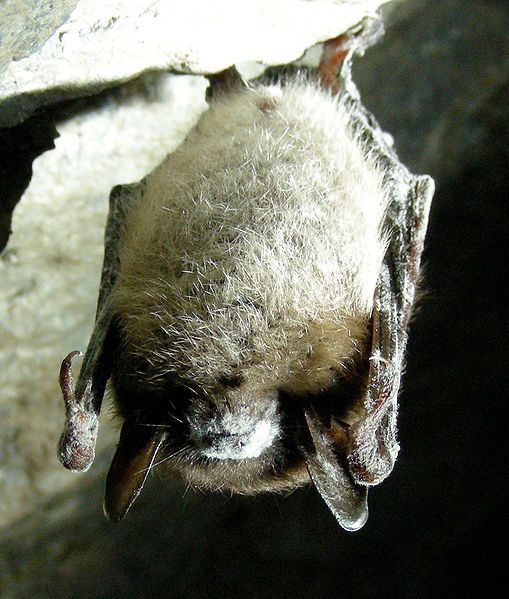Deadly Disease for Bats May Be Spread by Sociability

Scientists researching white-nose syndrome for bats have found that the effects of the disease may be more deadly for sociable species of bats that hibernate in groups.
Researchers studied populations of six different bat species between 1979 and 2010, which covered an extensive period of population growth, followed by a steep decline precipitated by white-nose syndrome. All six species studied were affected, but there is evidence that the populations have begun to stabilize for some groups.
The poorly understood disease has been decimating bat communities in North America. First discovered in 2006 in New York, white-nose syndrome is a fungal infection that has since spread throughout the Northeast and Canada. A furry white nose is what gives victims away, though the white fluff can spread to the wings as well. White-nose syndrome causes bats to wake up prematurely during hibernation and to deplete fat reserves, causing the afflicted to starve to death. It has driven several species to the point of endangerment, but it is not yet understood on how to treat affected bats or to prevent the illness from spreading.
But researchers seem to have found some small piece of knowledge about the disease – bat species that hibernate together tend to be affected at a much worse rate than species that hibernate by themselves. As colonies become smaller, populations of single-roosters tend to level off, but that is not the case for social hibernators.
Surprisingly, this seems to be something that some species are learning for themselves. Little brown bats, one of the most common species in the Northeast, is naturally gregarious, and used to hibernate in dense colonies. Due to the outbreak, brown bats have overwhelmingly changed their hibernation habits – 75 percent of little brown bats now hibernate alone.
This is a marked comparison for other gregarious species. The Indiana bat congregates in clusters for hibernation, and researchers believe that they will likely continue the steep decline into extinction.
The two species least affected by white-nose syndrome, the big brown bat and the eastern small-footed bat, both tend to hibernate by themselves.
The disease could have potentially deadly consequences for humans as well. Bats are integral for pollinating flowers, dispersing fruit seeds, and keeping away pests from agriculture, thus lowering the need for pesticides.
The study was published in Ecology Letters.
Published by Medicaldaily.com



























